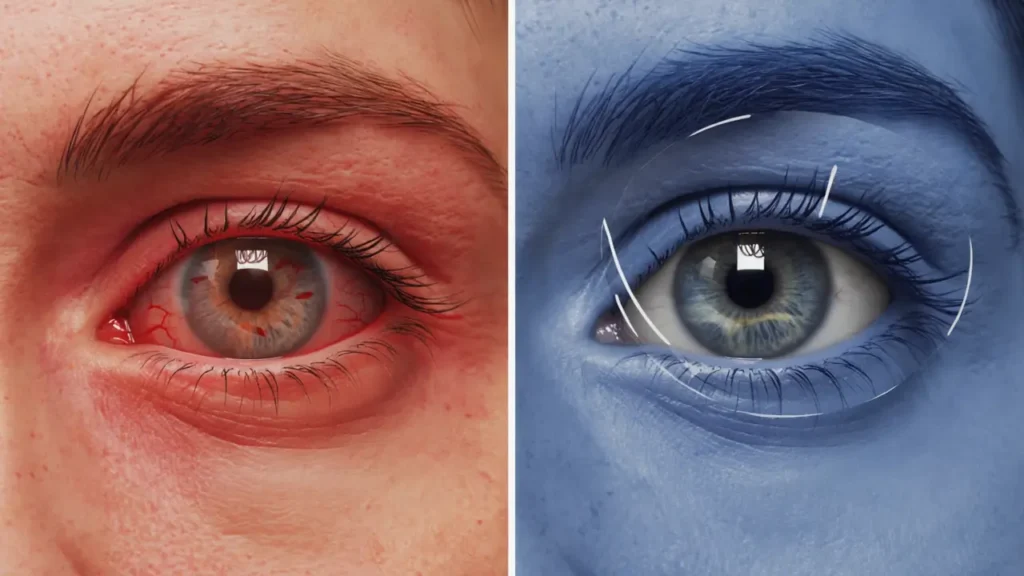Graft‑versus‑host disease (GVHD) is a serious autoimmune complication that can occur after a bone marrow transplant. In GVHD, the donor’s immune cells attack the recipient’s tissues – including the eyes. For many patients this manifests as severe dryness, inflammation, corneal damage and light sensitivity.
How does GVHD affect the eyes?
In ocular GVHD the lacrimal glands are damaged, leading to an unstable tear film. Patients describe a gritty sensation, burning and sometimes corneal scarring. In severe cases, significant loss of visual acuity can occur. This is where advanced solutions like dry‑eye therapy with specialised drops, scleral lenses and personalized technologies such as EyePrintPRO come into play. They help maintain a stable fluid layer and provide full corneal protection.
Clinical data and statistics
The scale of the problem highlights the need for early diagnosis and treatment:
- Studies show that 40–60% of patients who undergo bone marrow transplantation develop ocular GVHD.
- Half of the transplant recipients are expected to experience some ocular involvement over the long term.
- In some cohorts, ocular involvement reaches up to 57% within two years of the transplant.
These data underscore that every transplant patient must be closely monitored, with an emphasis on prevention, early detection and customised optical solutions.
Advanced treatments
- Prescription drops and tear substitutes – Provide initial relief but are insufficient on their own in advanced cases.
- Scleral lenses – Create a fluid reservoir between the lens and the cornea, protecting against dehydration and abrasion.
- EyePrintPRO – A unique technology based on a personal “eye print” that allows extremely accurate fitting even in complex situations such as GVHD or advanced keratoconus.
When should you seek evaluation?
Anyone experiencing severe dryness, burning, redness or persistent decline in visual quality after bone marrow transplantation should see a specialist optometrist and/or ophthalmologist. Early diagnosis can prevent irreversible damage.
Frequently asked questions
- Does GVHD worsen over time? Yes. Without tailored treatment the condition tends to worsen, potentially leading to severe corneal complications.
- Are scleral lenses suitable in this condition? Absolutely. They are considered one of the most effective solutions, especially when combined with technologies like EyePrintPRO.
- Is there a link between GVHD and other diseases? Sometimes. Patients with GVHD can develop conditions resembling keratoconus due to recurrent inflammation and changes in corneal structure.
Summary
Ocular GVHD is a severe but treatable complication. Solutions such as advanced dry‑eye therapy, customised scleral lenses and innovative technologies like EyePrintPRO can significantly improve patients’ quality of life and vision. At M’Eye Clinic we combine medical knowledge, clinical experience and cutting‑edge technology to provide each patient with personalised, precise and effective care.

